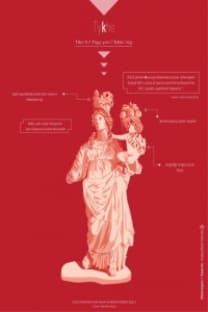Etkileşimli Belgesellerde Kullanıcı Deneyimi ve Gerçeklik Algısı
Ayrı bir tür olarak ortaya çıkışından beri özünü gerçeklik arayışından alan belgesel, dijitalleşmeyle birlikte yeni alanlarda varlığını sürdürmeye devam etmiştir. Kurgusal filmlerden farklı olarak toplumdaki olaylara objektif bir biçimde ayna tutmaya çalışan belgesel filmler, çoğunlukla toplumsal ve çevresel konularda politik bir duruş sergileyen bir tavra sahip olmuştur. Yeni medya teknolojilerinin varlığı ile birlikte yeni bir belgesel formu olan etkileşimli belgeseller ortaya çıkmış, bu belgesellerin ortaya çıkışı izleyicinin konumunu değiştirmiştir. Katılımcı, 1çoğulcu, çok sesli belgesel filmler seyirciyle buluşma şansı yakalamıştır. Yapılan bu çalışmada etkileşimli belgesellerin tanımı ve sınıflandırılmaları akabinde, kullanıcı deneyimi tasarımı perspektifinden yola çıkılarak, izleyiciden kullanıcıya dönüşüm ve filmin gerçekliğinin inşasında kullanıcının rolü ve deneyimi tartışılmıştır. MIT MIT Open Documentary Lab’in çatısı altında bulunan, konusunu toplumsal meselelerden alan, teknoloji seçimi, arayüz ve etkileşim tasarımı açılarıdan farklı yaklaşımları olan yedi adet belgesel bu çerçevede analiz edilmiş, izleyicinin kullanıcı konumuna evrilme süreci ile etkileşimi etkileyen faktörlerin belgeselin gerçeklik olgusunu nasıl etkilediği tartışılmıştır.
Anahtar Kelimeler:
Etkileşimli belgesel, Gerçeklik, İnteraktif medya, Kullanıcı deneyimi tasarımı
User Experience and Aspect of Reality In Interactive Documentaries
Documentaries have been related with the seek of reality since it is defined as a distinct narration category. Unlike fictional films, documentary films that try to mirror events in society objectively have had a more political stance towards issues regarding social and ecological problems and discriminations. With the advent of digital media technologies, interactive documentary has come to existence as a new form documentary. Under the category of interactive documentary, participatory and pluralist films have had the chance to meet the audience. This study focuses on the definition and classification of interactive documentaries, the transformation of the spectator into user and the role and experience of the user with respect to the perception of reality. A selection of documentaries from MIT Open Documentary Lab, which are all on social issues but utilize technology and interaction design differently, have been analyzed. Through the analysis of these films, we present a discussion on the transformation from audience to user, and how different qualities of documentaries might affect the perception of reality.
___
- Braida, N. (2012/2013). Web Documentary. Documenting Reality in the Post-media Age (Published master's thesis). Università degli Studi di Undine. Erişim adresi: https://www.academia.edu/4284909/Web_Documentary._Documenting_Reality_in_the_Post_media_Age
- Castells, A. G. (2011). The Interactive Documentary. Definition Proposal and Basic Features of the New Emerging Genre. In McLuhan Galaxy Conference: Understanding media, today (pp. 367-378). Barcelona: Editorial UOC Erişim adresi: https://www.researchgate._documentary_Definition_propoal_and_basic_featues_of_the_new_emerging_genre#fullTextFileContent
- Galloway, D., Mcalpine, K. B., & Harris, P. (2007). From Michael Moore to JFK Reloaded: Towards a working model of interactive documentary. Journal of Media Practice, 8(3), 325-339. doi:10.1386/jmpr.8.3.325_1
- Gaudenzi, S. (2013). The living documentary: From representing reality to co-creating reality in digital interactive documentary (doctoral thesis, Goldsmiths University Of London, 2013). London. doi: https://doi.org/10.25602/GOLD.00007997
- Kim, N., & Kim, S. (2014). Interactive Documentary on Perspective of New Media. International Journal of Multimedia and Ubiquitous Engineering, 9(12), 117-128. doi:10.14257/ijmue.2014.9.12.11
- Kuruoğlu, H., & Akçora, E. (2017). Dijital Ortamdaki Belgesel Filmde Yeni Anlatım Biçimleri. 1. Uluslararası İletişimde Yeni Yönelimler Konferansı (s. 510- 522), Ankara: Nobel Yayıncılık
- Mutlu E. (1991). Televizyonu Anlamak. Ankara: 1991
- Nash, K. (2012). Modes of interactivity: Analysing the webdoc. Media, Culture & Society, 34(2), 195-210. doi:10.1177/0163443711430758
- Nichols, B. (2017). Introduction to documentary. Bloomington, IN: Indiana University Press.
- Ocak, E. (2014). " New Media Documentary: Playing with Documentary Film within the Database Logic and Culture". In A Digital Janus. Leiden, The Netherlands: Brill. doi: https://doi.org/10.1163/9781848883055_022
- Özkan, Z. Çetin (2017) Belgesel Sinemanın Gerçeklik İle İlişkisi. Parsa F. A. ve Kuruoğlu H. (Ed.) Belgesel Filmde Zamanın Ruhu içinde içinde (s. 81), Ankara: Detay Yayıncılık.
- Parkan, Mutlu. (1997) “ ‘Gerçek’ Ne Kadar Gerçektir?” Belgesel Sinema Üzerine. I. Ulusal Konferans Bildirileri. İstanbul: Tayf Basım.
- Chen, J. (Yönetmen). (2014). After 6/4 [Video file]. Avustralya: Freehand,SBS Online. Retrieved June 11, 2020, from http://after64.sbs.com.au/
- Fougère, I., & Plana, M. D. (Yaratıcı Ekip). (2012). Alma: A Tale Of Violence [Video file]. France: Agence VU,Arte,France Info,Rue 89, taz.de, Télérama, Upian. Retrieved from http://alma.arte.tv/en/
- Thomas, E., & ØSTBYE, A. (Yaratıcı Ekip). (2013). _17000 Islands [Video file]. Indonesia,Norway: Thomas A. Østbye. Retrieved June 11, 2020, from http://17000islandsinteractive.com/islands_repo/
- Zaman, Ç H., Tortum, D., & Tuzcu, N. (Yaratıcı Ekip). (2016). September 1955 [Video file]. Turkey, USA: Virtual Collaboration Research. Retrieved from https://docubase.mit.edu/project/september-1955/.
- Başlangıç: 2016
- Yayıncı: Düzce Üniversitesi
Sayıdaki Diğer Makaleler
Etkileşimli Belgesellerde Kullanıcı Deneyimi ve Gerçeklik Algısı
Umut Burcu TASA YURTSEVER, Ekin TANERİ
Çağdaş Dramaturji ve Sinema İlişkisine Karşılaştırmalı Bir Bakış
ANADOLU’NUN KADİM UYGARLIKLARINDAN SÜZÜLEN MÜZİKSEL ANLAMI ÇÖZÜMLEMEDE ‘ARKEO-MÜZİKOLOJİ’NİN ÖNEMİ
Fatih Akın’ın Altın Eldiven Filmi Ve Yeni Nesnellik İlişkisi Üzerine Karşılaştırmalı Bir İnceleme
Batı’dan Batı’ya Seslenmek: Jonas Hassen Khemiri’nin Kardeşlerimi Arıyorum Oyunu
Güncel Sergileme Pratiklerinde Eleştirel Küratöryal Yaklaşımlar
İLHANLI VE TİMURLU MİRAÇNAMELERİNDEKİ HOROZ TASVİRİ ÜZERİNE KARŞILAŞTIRMALI BİR İNCELEME
Çağdaş Tiyatroda Bahtin Etkisi: Kraliçe Viktorya’ya Bir Mektup ve Orman
